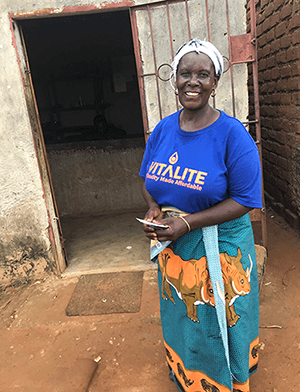- Where We Work
- Africa
- African Union
- Power Africa
- Trade and Investment
- Angola
- Benin
- Botswana
- Burkina Faso
- Burundi
- Cameroon
- Central Africa Regional
- Central African Republic
- Chad
- Côte d'Ivoire
- Democratic Republic of the Congo
- Djibouti
- East Africa Regional
- Eswatini
- Ethiopia
- Ghana
- Guinea
- Kenya
- Lesotho
- Liberia
- Madagascar
- Malawi
- Mali
- Mauritania
- Mozambique
- Namibia
- Niger
- Nigeria
- Republic of the Congo
- Rwanda
- Sahel Regional
- Senegal
- Sierra Leone
- Somalia
- South Africa
- South Sudan
- Southern Africa Regional
- Sudan
- Tanzania
- The Gambia
- Uganda
- West Africa Regional
- Zambia
- Zimbabwe
- Asia
- Europe and Eurasia
- Latin America and the Caribbean
- Middle East
- Mission Directory
Speeches Shim
Zambia
POWER AFRICA FACT SHEET
ZAMBIA ENERGY SECTOR OVERVIEW
Zambia has 2,800 MW of installed electricity generation capacity, of which 85% is hydro based. National access to electricity averages at 31% with 67% of the urban and 4% of the rural population having access to power. In 1996, the Government of Zambia set a goal for universal electricity access for all Zambians by 2030. Energy has been identified as an important driving force behind economic development in Zambia, and the government has declared its commitment to developing and maintaining energy infrastructure and services. Although there are pockets of private sector activity in generation, transmission, and distribution, the vast majority of power in Zambia is operated by ZESCO, the vertically integrated state-owned utility. However, the sector is opening up to new IPPs for on-grid and off-grid transactions. GOZ expects to bring online additional MW of solar, hydro, and thermal power through 2020.
GENERATION CAPACITY
- Installed Capacity: 2,800 MW
- Hydroelectric: 2,380 MW (85%)
- Non hydro (Coal, Heavy Fuel Oil, others): 405 MW (15%)
- Reached Financial Close: 208 MW
CONNECTIONS
- Current Access Rate: 31%
- Rural: 4% Urban: 67%
- Households without Power: 7.2 million
- Target: Universal access by 2030
- PA New Off-Grid Connections: 314,767
INVESTMENT AND ENABLING ENVIRONMENT
Biggest Issues
- Continued market-based reforms
- Credit-worthiness of off-taker
- Growing government debt
- Transmission and distribution capacity lag
Power Africa Interventions
- Policy support through embedded advisors, donor coordination, and the South Africa Energy Program
- Support of Scaling Solar and off-grid initiatives
- DCA guarantee to strengthen distribution network
POWER AFRICA’S ENGAGEMENT IN ZAMBIA
During 2017, Power Africa has made marked progress to support Zambia’s power sector development. Power Africa assisted the Energy Regulation Board (ERB) with development of Multi-Year Tariff Framework (MYTF) Procedures, Rules and Regulations to enable ERB to set tariffs in advance over a three-year period to allow conditional adjustments in tariff changes to be factored into the utility. Power Africa also placed a Senior Energy Policy Advisor in the Ministry of Finance to advise on critical policy developments, and a Senior Technical Advisor in ZESCO who works to build systems and capacity for the integration of intermittent renewable energy sources (e.g. solar and wind). At the end of 2016, the United States Agency for International Development (USAID) with the Ministry of Energy and the regulator developed a Renewable Energy Feed-In Tariff (REFIT), complete with a standardized Power Purchase Agreement.
MW GENERATION
In March 2016, Power Africa and USAID Zambia provided $2 million to support the International Finance Corporation’s (IFC) Scaling Solar program in Zambia, which is expected to result in up to 100 MW of new solar power. This support helps finance the critical costs necessary to establish and implement a transparent, competitive bidding process to attract qualified solar power developers and to build institutional capacity and catalyze market growth. In 2017, the United States Trade and Development Agency (USTDA) provided feasibility funding for two private sector developers that aim to advance 20 MW of geothermal generation capacity and 130 MW of wind generation.
CONNECTIONS
USTDA also provided feasibility funding for 150 micro-grids that will provide electricity connections to 22,500 households. The United States African Development Foundation (USADF), through the USADF Off-Grid Challenge, provided $100,000 to support a solar micro-grid, which was commissioned and will initially supply electricity to a school, rural health center, and 60 households.
SUCCESS STORIES
Lighting the Way to Women’s Economic Empowerment in Rural Zambia
Teresa lives in Chadiza, a small town in Zambia’s Eastern Province, where she runs a one-stop-shop that offers not only drinks, food, and toothpaste, but also pay-as-you-go (PAYGO) solar home systems (SHS).
Through her business savvy and an opportunity provided by SHS company, VITALITE, Teresa has significantly improved her own economic well-being, as well as that of her community.
In Zambia, where only four percent of the rural population has access to electricity, private sector SHS companies are expanding their reach to accelerate delivery of off-grid connections. The USAID Southern Africa Energy Program (SAEP), a Power Africa initiative, supports SHS companies by training employees to improve solar system sales and increase connections.


Comment
Make a general inquiry or suggest an improvement.